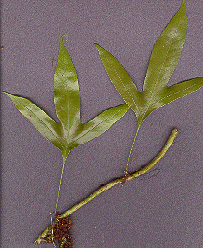 17. Write down the local name in your language for the plant shown on the right. The plant is a fern that grows both on trees and on the ground across Micronesia. Write down a local traditional use for that plant here in Micronesia.
17. Write down the local name in your language for the plant shown on the right. The plant is a fern that grows both on trees and on the ground across Micronesia. Write down a local traditional use for that plant here in Micronesia.Samples of the following plants are labeled with letters. Write the letter in the blank next to the correct name.
 17. Write down the local name in your language for the plant shown on the right. The plant is a fern that grows both on trees and on the ground across Micronesia. Write down a local traditional use for that plant here in Micronesia.
17. Write down the local name in your language for the plant shown on the right. The plant is a fern that grows both on trees and on the ground across Micronesia. Write down a local traditional use for that plant here in Micronesia.
18. Mosses, ferns, and other "primitive" plants share some common features and needs in their reproductive cycles. What are those features/needs?
19. Describe the difference between public general knowledge plant medicines and private secret knowledge plant medicines. Which one is of more interest to ethnobotanists? Why?
20. For flowering plants, what three key features must be collected to make a correct botanic identification by latin binomial?
21. Describe a healing use of a plant. The catch: you cannot describe a use for the plant from your state, you must describe a use of a plant described by another member of the class who is from a different state. If you can recall, also include the name of the plant presented by that member of the class.
22. Why are there no baby Cook island pines on Pohnpei?
23. While in the garden Lee Ling spoke about the importance of nutmeg. Nutmeg is so very important that the textbook also covers this topic at length. What is the importance of nutmeg?
24. Use the samples in class to do the following matching of gymnosperm leaf types:
25. Label each of the three main stem layers shown in the image and describe the function of that layer.
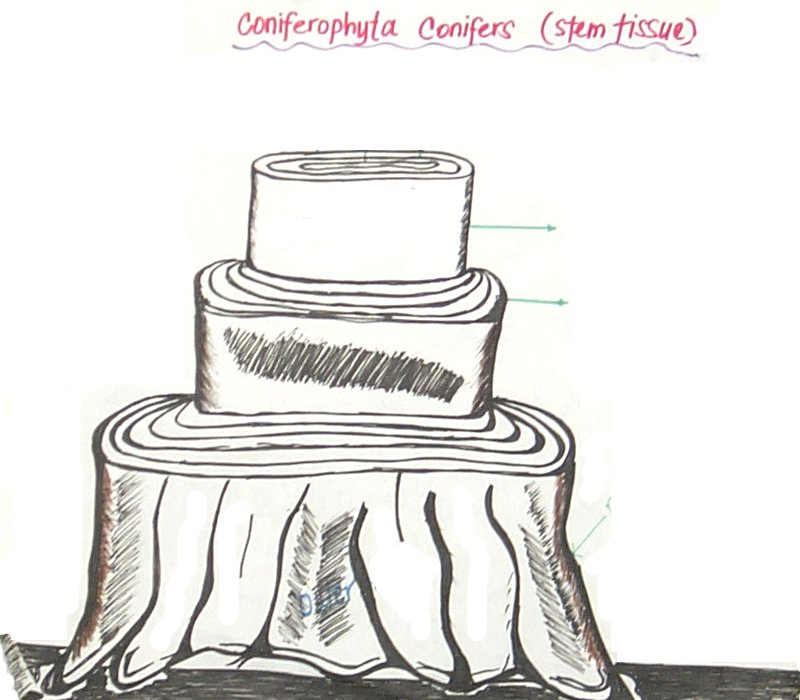
26. Add labels to the diagram below:
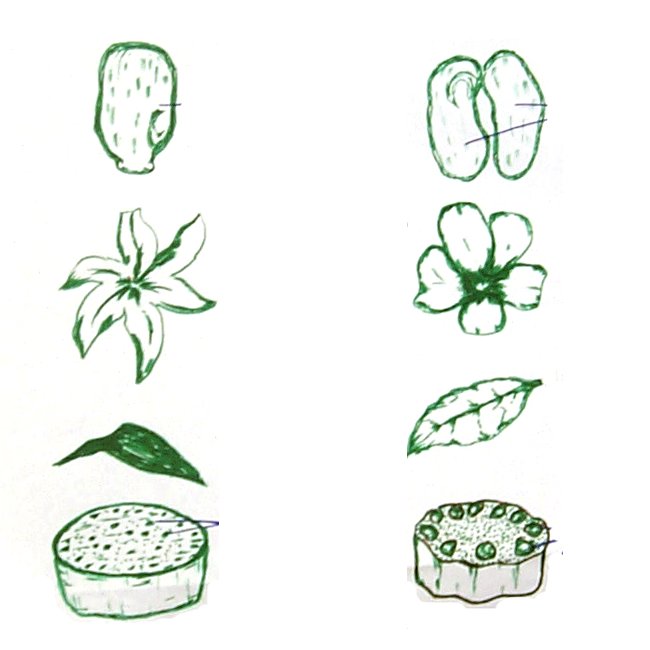
27. What key features distinguish gymnosperm reproduction from the reproduction of the more primitive seedless vascular plants such as mosses, lycopodium, ferns?
Images from the matching section of the examination
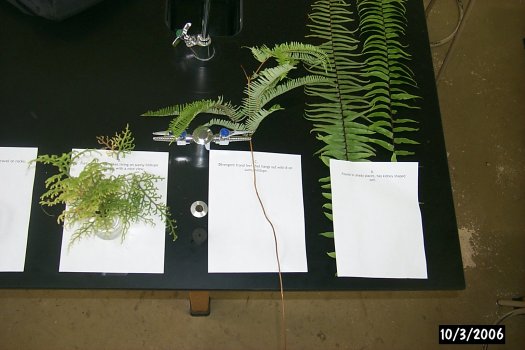
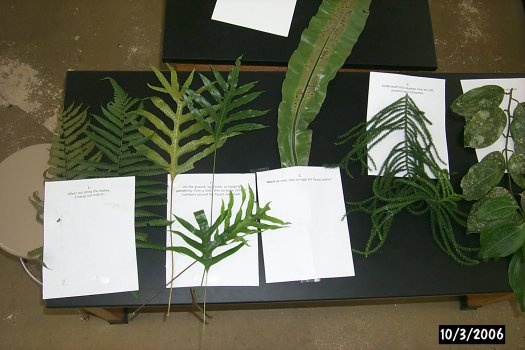
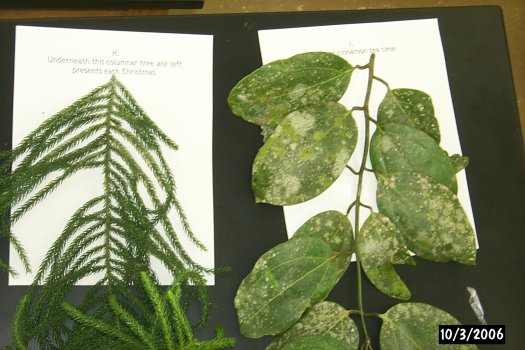
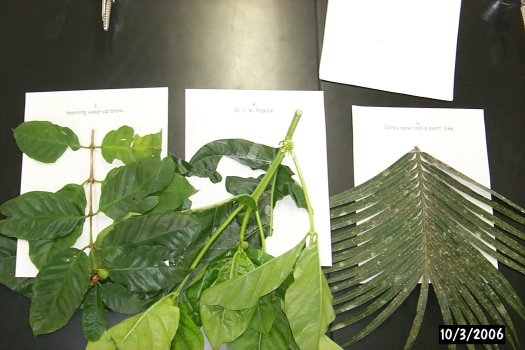
Label hints:
A. Loves to lay out in the sun on gravel or rocks. Willing to dry up. [Not seen in images above] B. Furry fellow who likes living on sunny hilltops and hillsides with a nice view. C. Divergent frond fern that hangs out with B on sunny hilltops. D. Found in shady places, has kidney shaped sori. E. When not doing the dishes, E hangs out with D. F. On the ground, up a tree, or hanging pendently from a limb, this versatile climber clambers around the forest with ease. G. Need us note that no eggs are found within? H. Underneath this columnar tree are left presents each Christmas. I. Pohnpei cinnamon tea time J. Morning wake-up brew. K. Dr. I. M. Popular L. Stinky cone "not-a-palm" tree M. 'Tis the seasoning of the night. N. A Pohnpeian brother to M. O. The fragrant reason why you are sitting here writing a midterm in a foreign language instead of enjoying an afternoon nap in thatched hut P. A robust tree which likes to watch tennis